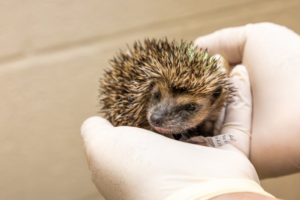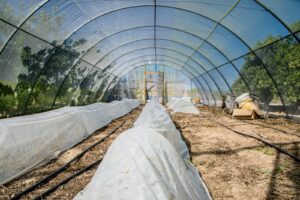Darren Evans, reader in Ecology and Conservation at Newcastle University discusses why wildlife conservation efforts need to change if we are to avoid the risk of total biodiversity collapse.
Despite considerable effort, and some wonderful success stories, it is widely acknowledged that global conservation targets to reverse declines in biodiversity and halt species extinctions by 2020 will not be met.
Significant and rapid declines in insects, birds, mammals, reptiles, amphibians and fish are increasingly being reported from many parts of the world as a result of human activities.
Last year, the most thorough assessment of the world’s biodiversity to date was published. This estimated that a million animal and plant species are now threatened with extinction. That’s 25% of the planet’s species, based on the best estimates.
Much work has gone into identifying, protecting and managing important habitats and ecosystems over the past decades, but conservation action has often focused on large, charismatic animals such as pandas, elephants and gorillas. And there are problems with this approach.
Targeting ‘flagship species’ in this way does have some obvious benefits in terms of raising public awareness. Conservationists assume that the public are more likely to care about, and donate towards, tiger protection compared to moths, wasps and beetles (some of the most threatened groups of insects), for example.
This approach has also played a role in protecting whole habitats.
To protect tigers, conservationists need to maintain large areas of land which they need to flourish.
This protected land gives a whole host of less glamorous species space to exist.
But climate change is now rapidly shifting the relationships between many predators and prey out of balance. This requires a radical rethink of these outdated conservation strategies.
Another principal conservation approach thus far has been to catalogue and monitor thousands of species around the world.
By doing so, scientists have been able to create biodiversity hotspot maps and global ‘barometers’ that are used to guide and inform conservation action.
But this process also has some major limitations. In particular, by simply focusing on numbers of species, it can mask our understanding of the ‘health’ of entire ecosystems, how they are functioning and their overall resilience to environmental change and species extinctions.
Understanding networks
All this means that in many parts of the world we know a lot about individual species and overall biodiversity, but very little about how species interact with one another.
This is important as all species, including humans, are embedded in a complex network of interactions.
If something happens to one, it could have cascading impacts on the others, especially if it goes extinct.
By studying the ways in which species interact, scientists are increasing our understanding of a range of ecological processes from which humans benefit, such as pollination and natural pest control.
Biodiversity underpins human life-support systems so, for us, the loss of biodiversity is as grave and important as the impacts of climate change.
Actually the two issues are interrelated: understanding the direct and indirect interactions between species provides new ways of seeing how unstable ecosystems become when environmental conditions change and when species go extinct.
We don’t have a serious hope of stemming biodiversity loss unless more people understand the importance of these interactions between all species – and our own place within these ecological networks – rather than just focusing on poster species.
And it turns out that the game of Jenga is particularly good at helping with this.
It is a fantastic metaphor for understanding the interdependence of entire communities of interacting species and how extinctions cause ecosystems to become more fragile.
Biodiversity Jenga
I have been playing ‘Biodiversity Jenga’ with university students, school children and members of the public in shopping malls for over a decade.
I do this to explain concepts in food web ecology and show how ecosystems become less stable as species go extinct.
Each brick has a different picture of a farmland plant, insect, bird or mammal on it and these are stacked to make a tower representing a farm ecosystem.
I include human bricks too, who not only make decisions about how the farm is managed, but are also dependent on the ecosystem for their own survival.
Players take turns to remove bricks, providing me with the opportunity to talk about the ecological role of individual species within the ecosystem, and whether they are threatened with extinction.
As the game progresses, the tower becomes less and less stable as more bricks are removed – a poignant demonstration of the current state of nature.
Although plants and animals are still present, the continued loss of species and their interactions with each other makes the ecosystem more and more fragile. And, as everyone knows, ultimately the whole thing will come crashing down.
Playing this game has made it apparent to me that biodiversity loss and climate change are not high priorities for many people, mostly because the issues seem intangible or invisible.
They say they still see the same animals each year in areas where they live and work, so question whether there really is a problem.
Playing Biodiversity Jenga helps to show that the insidious decline in abundance and the ultimate loss of multiple species can have profound effects on the ecosystems on which we all depend.
But it also shows that there are reasons to be optimistic.
By better understanding the structure and fragility of ecological networks, we provide a new approach for identifying groups of species that are important to the integrity of an ecosystem.
These can potentially be targeted for conservation management to boost ecosystem resilience. And often these key species are not the charismatic mammals and birds, but rather plants and insects: the same species that tend to be overlooked in many current conservation programmes.
This is what my work involves: piecing together the multiple ways in which species interact and drawing upon the DNA technologies used in forensic science to construct and analyse ecological networks.
Advances in this field provide enormous opportunities to develop new tools for building ecosystem resilience, to improve simultaneous monitoring of biodiversity and ecological processes and ultimately for ecological restoration. We must find more ways to present this work in tangible and creative ways that people can understand and take part in.
This article is republished from The Conversation under a Creative Commons license. Read the original article here.
Photo Credit – Pixabay
















